Recommendation points
- Removing cold bridges
- Glazing features
- Suspended ventilated systems
- Thermal insulation for a wet facade
- Brick house cladding
- Separating insulation layer
Despite the high heat-saving performance of expanded clay concrete blocks, buildings made of them often need additional insulation. At a minimum, it is necessary to eliminate the natural vulnerabilities of thermal protection, so today we will talk about the thermal properties of buildings made of expanded clay concrete blocks and how to improve them..
Removing cold bridges
A rare construction project has no flaws in thermal protection. In standard practice, typical heat leaks are lintels of openings, armored belts under the ceiling, seams, dressing fittings and other areas of enclosing structures with high density and thermal conductivity. Unfortunately, the elimination of one type of cold bridges does not solve the problem, but consistent adherence to the recommendations allows you to reduce heat loss to a minimum..
The main problem is presented by armored belts and lintels of openings. They are full-bodied and transfer heat very actively, given their location in the zone of the highest temperatures – under the ceiling and above window openings and radiators. But it is enough to break the massif with a partition made of a more porous material, as the heat loss will decrease significantly.
For this reason, it is recommended to cast lintels of openings using profile trays. Products made of expanded clay concrete of this kind are practically not found, but they can be replaced with trays made of aerated concrete or porous ceramics. If it is decided to cast the belt or lintels along the formwork, the form must be divided in 1-2 places by a longitudinal partition made of extruded polystyrene foam, appropriately distributing the reinforcement.
Another example is wall sections made with solid blocks. Framing of openings and open ends of walls, corners and T-shaped inserts according to the general technology are laid using blocks without voids. They conduct heat better than the rest of the array, causing disturbances in the heat transfer circuit. This can result in areas with uncontrolled dew point displacement, a typical example is the raw corners of internal and enclosing walls. Therefore, in a multi-row masonry of 1.5 or 2 blocks, the rows are separated by a slab polymeric foam material. In single-row walls of two-story buildings, the insulation is applied from the outside, forming a facade blade.
Cold bridges may be less obvious, but just as significant. The seams between the elements of the masonry, and in particular the embedded fittings in them, have a very high heat transfer coefficient. It would be a good solution to prepare a mortar for masonry with the inclusion of air-entraining agents and replace the steel reinforcement with polymer. The constancy of the linear dimensions of the blocks makes it possible to apply a minimum layer of binder masonry – this should also be taken into account.
Glazing features
It is important to understand the difference between expanded clay and expanded clay concrete blocks. The porosity of the latter is much lower, therefore, the direct purpose of this material is the laying of an array with a bearing load. For insulation, lighter expanded clay blocks are used – they encircle the building along the entire contour.
A two-row masonry system allows you to implement many interesting ideas regarding heat conservation. In particular, if 25-30 mm of external heat-insulating masonry is allowed in the window openings, it is possible to form a quarter for a tight abutment of the glass unit frame and thereby ensure that blowing is eliminated.
1 – expanded clay concrete blocks; 2 – expanded clay blocks; 3 – quarter 30 mm
The problem is that external blocks, due to their high porosity, can cause convective heat loss. Therefore, the outer part of the opening with a 20–25 cm approach to the outer surface of the walls should be treated with waterproofing mastic. Otherwise, the installation of window blocks is quite trivial: direct installation through the frame, foam seams of sufficient thickness and reliable support pads under the imposts guarantee durability and tightness.
Suspended ventilated systems
Expanded clay and expanded clay concrete blocks, in contrast to porous ceramics, have a density high enough to use the technique of direct and anchor mounting. The breakout force for one anchorage point ranges from 40-45 kg, therefore the installation of consoles and the subsystem of the ventilated facade is quite possible.
The problem is that expanded clay blocks have high vapor permeability, and letting steam out through mineral wool without hindrance means losing heat in its pure form and risking the insulation getting wet. An attempt to trap steam inside completely can cause moisture condensation in the supporting layer and hopelessly ruin the building..
1 – a wall of expanded clay blocks; 2 – ventilated facade subsystem; 3 – removal of moisture from the room; 4 – distance strips for the membrane; 5 – vapor-permeable membrane; 6 – insulation
The problem is solved by providing space for airflow at the outer surface of the wall. It should be quite small, just a wooden rail is attached to the facade, which prevents the membrane from “sticking” to the wall. The vapor barrier must have a limited, but not zero flow capacity, so the water vapor will evenly give off the temperature, slowly circulating inside.
Thermal insulation for a wet facade
Unlike wood concrete, expanded clay blocks have a greater ability to retain moisture, therefore it is recommended to protect them from atmospheric influences. Even if external insulation is not required, the facade should be finished with a layer of protective plaster. But usually an external thermal protection circuit is absolutely not superfluous..
The classic benefit of moving the dew point closer to the ventilated layer is key here. Even a small layer of polyurethane or polystyrene insulation of 30-50 mm helps to permanently avoid the formation of condensation and reduce the actual number of freezing cycles. All this will add several decades to the durability of the structure..
The surface formed by the expanded clay concrete blocks has a high roughness and excellent adhesion, so any adhesive building mixture adheres to them tightly. The use of disc dowels in the installation of thermal insulation is purely nominal, they are needed only for temporary fixation.
Brick house cladding
The appearance of expanded clay concrete masonry is very unassuming. One of the most effective options, combining insulation and decorative finishes, is to cover the facade with hollow bricks or porous ceramics. Even if the enclosing structure is represented by two layers – one load-bearing and one insulating, lining with bricks or panel materials gives a number of advantages.
Firstly, the developer receives a finished facade coating that does not require any repair or repainting in the next 30-40 years. The aesthetic value of the brick facade is also not satisfactory – the masonry can be very diverse.
Secondly, hollow brick tolerates direct contact with water well even in extreme cold and completely eliminates wall blow-through.
And, finally, the brick lining gives the enclosing wall a greater solidity, the ends of the floors receive more reliable protection..
Separating insulation layer
If, according to the heat engineering calculation, the thermal resistance of the walls turns out to be insufficient, and the installation of external insulation is undesirable, the load-bearing and insulation layer of the wall should be separated with a porous synthetic material. The effect of such insulation will be most pronounced when using foam glass, PIR or expanded polystyrene.
1 – insulating wall made of expanded clay blocks; 2 – load-bearing wall made of expanded clay concrete blocks; 3 – masonry mesh; 4 – expanded polystyrene
The main snag is to tie the separated layers to give them greater solidity, therefore, each row of masonry must be reinforced with a polymer or basalt mesh. The slab insulation must be cut into strips of 200 mm and laid using cement mortar with granular filler. It is also possible to freely use free-flowing fillers – slag, expanded clay, foam glass, but only with a vapor barrier film in the wall.



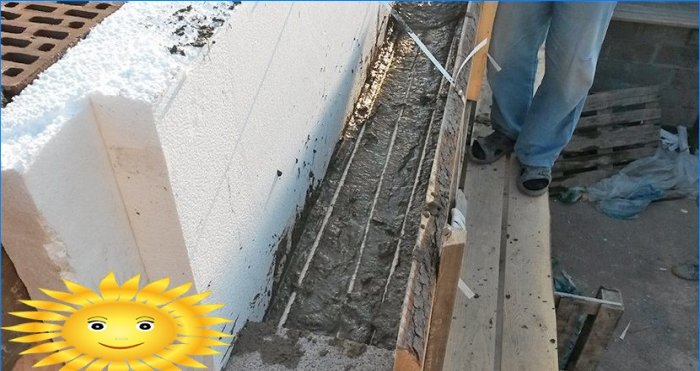
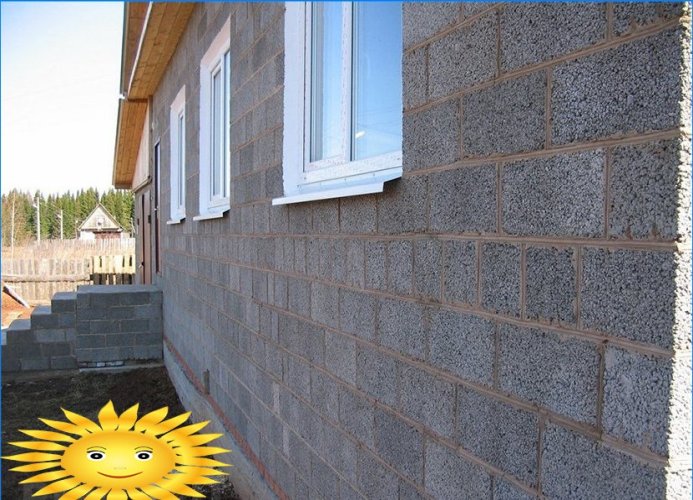
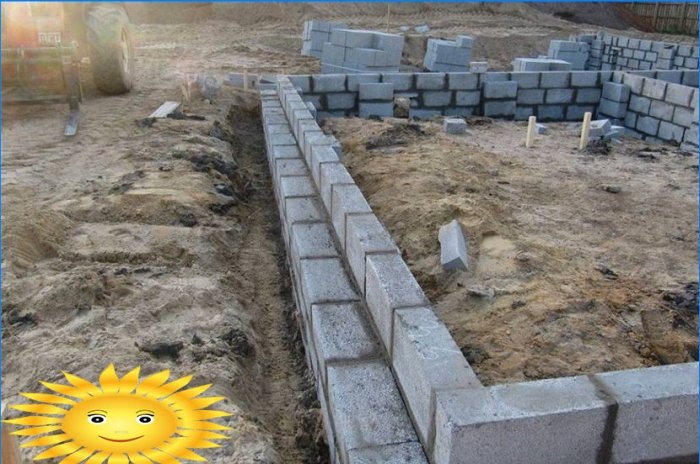

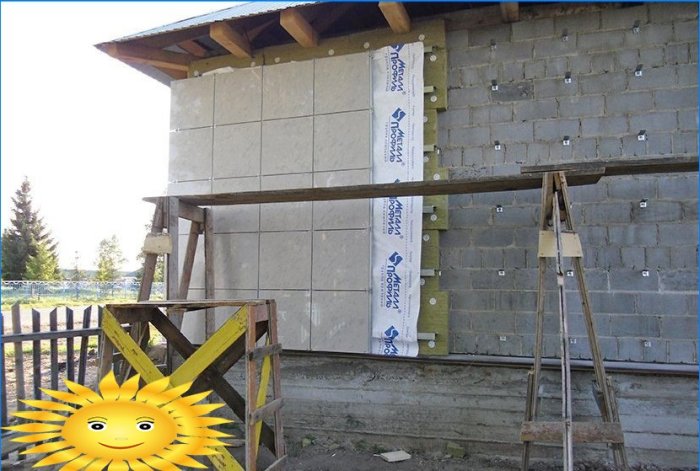
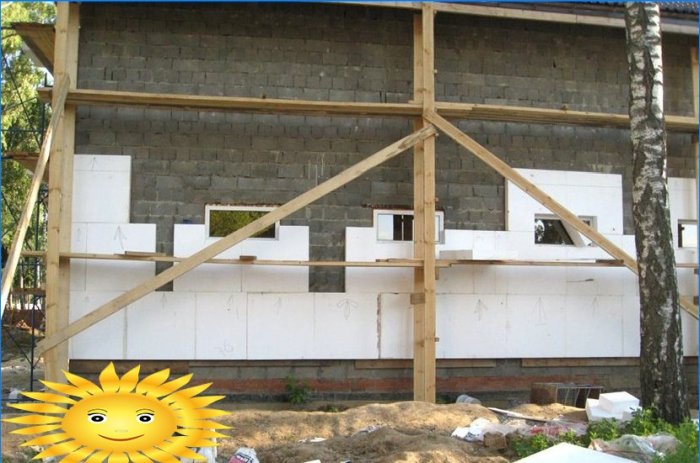
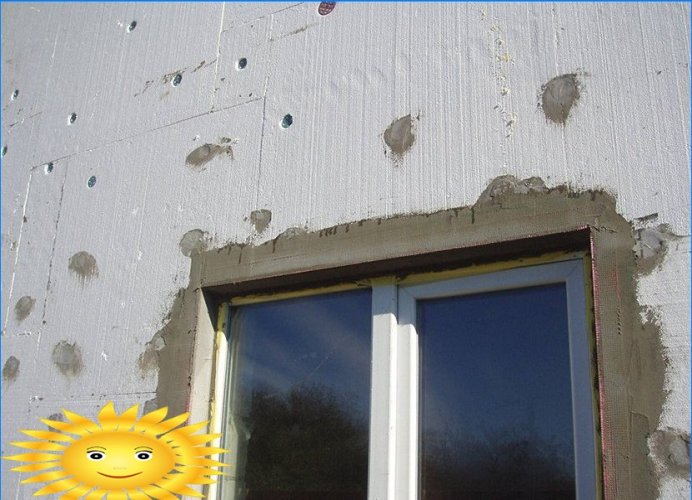

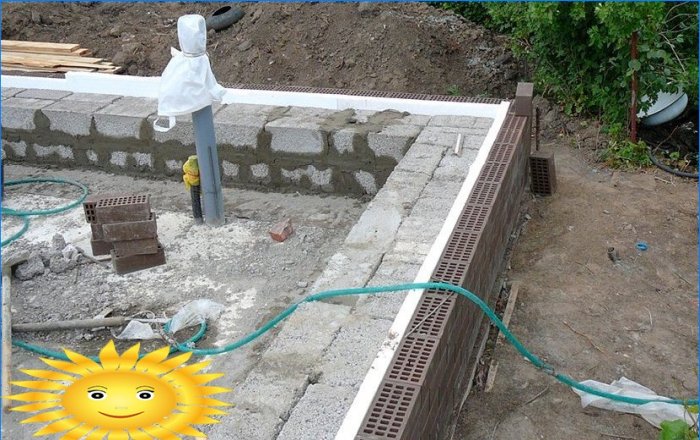
Hello! I’m interested in learning about the construction and insulation features of a private house made of expanded clay concrete blocks. Could you please share some insights on the advantages of using this material? How does it compare to traditional alternatives in terms of insulation, durability, and cost-effectiveness? Additionally, are there any specific techniques or considerations to keep in mind when working with this type of construction material? Thank you!
What are the key considerations and benefits of using expanded clay concrete blocks for the construction and insulation of a private house?